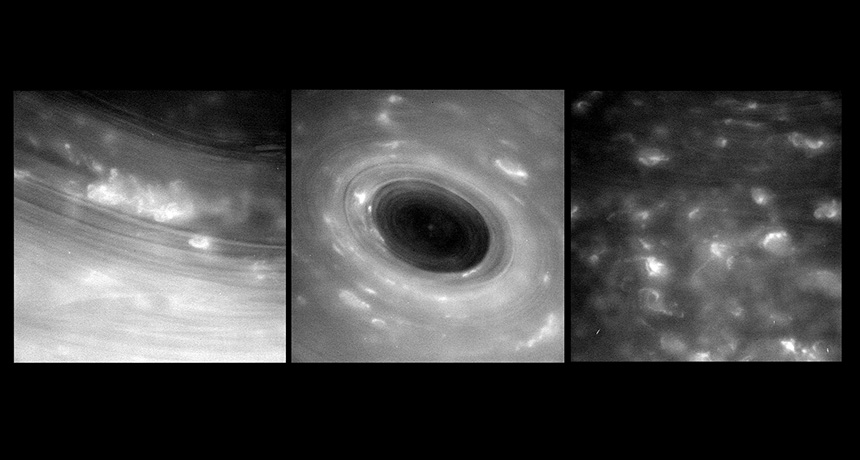Cassini’s ring dive offers first close-up of Saturn’s cloud tops
Spacecraft images reveal stunning views of planet’s hurricane and more

FIRST LOOK NASA’s Cassini spacecraft snapped these closest-ever views of Saturn’s atmosphere on April 26. The images show filamentary and cumulus clouds, along with a good view of the planet’s giant hurricane (middle).
Space Science Institute, JPL-Caltech/NASA







